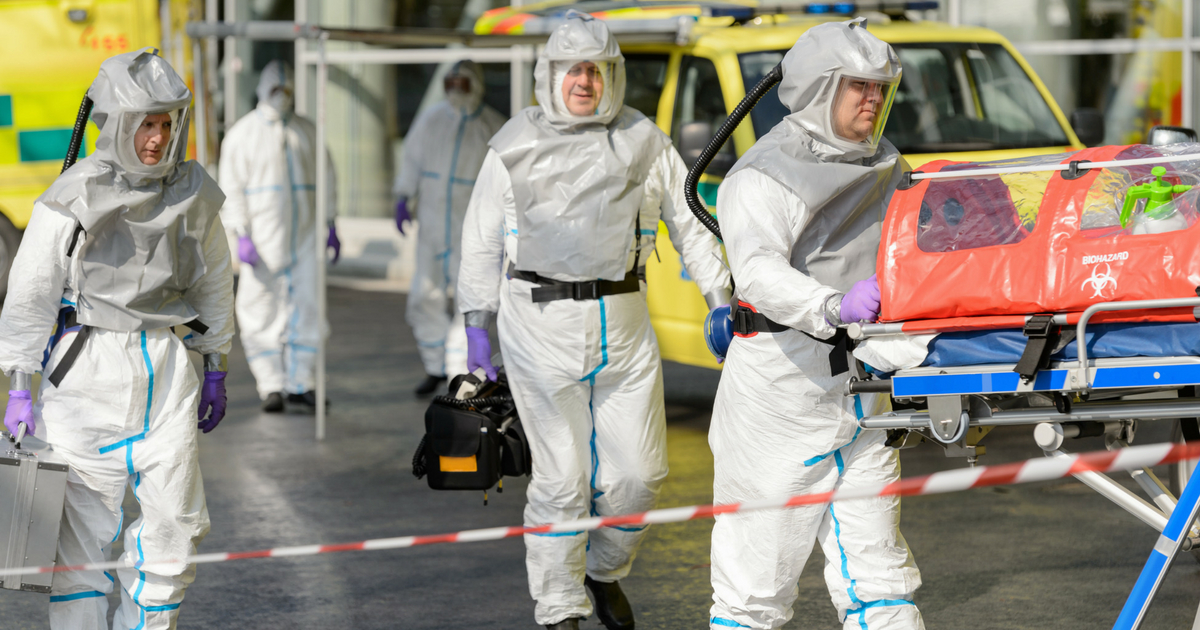
The term “hazardous materials” is not just a name, and there is a reason why the regulations covering them – and their requirements for the training of employees who work with them – are so stringent. Even the smallest mistakes at any point in the transportation process can result in a hazardous materials incident, and even the smallest of these incidents can pose a significant danger. Here is some information on hazardous materials emergency response and some details of the steps taken by trained emergency responders.
The Eight-Step Process
There is, in fact, a specific series of measures that emergency personnel follow in the event of a hazmat incident, and it is known as “The Eight-Step Process.” This article is intended to inform the average hazmat employee on what they can do before this personnel takes over, and it is worth going over the Eight-Step Process. The steps are listed below, with the goal of showing hazmat employees how they can assist emergency personnel before and after their arrival.
Site Management and Control
The immediate action, once an incident is known, is to isolate or evacuate everyone if necessary who is in dangerous proximity to the hazardous material(s) and containing it so that it cannot spread if the incident is identified by a trained hazmat emergency responder. Hazmat employees and management should consult the Emergency Response Guidebook for precise information on procedures for response and initial isolation.
Identifying the Problem
Clearing and securing the area are the most urgent tasks to take care of as quickly as possible. Once they are done, and before anything else can be done, hazmat employees will have to understand the precise nature of the incident. This means figuring out exactly which hazardous materials are involved, what risks they present, where and why it may have started, and anything else that may be important to know.
Hazard and Risk Protection
An extension of the previous step, this entails analyzing the risks as the situation develops. You may be able to learn more about the situation by observing people who were in the area during the incident and interpreting the source from their symptoms. The more information an organization can give to hazardous materials emergency response teams once they arrive, the faster everyone can work to resolve the incident.
Protective Clothing and Equipment
More detailed evaluation of the incident will likely require devices for measuring different qualities of the substance, and operating such equipment may require hazmat employees to don protective gear to prevent exposure or contamination. A workplace following the regulations outlined in the Occupational Safety and Health Administration (OSHA) Requirements should have such equipment and gear available for daily work use, so it should be easily accessible in case of incidents as well.
Information Management and Resource Coordination
Spreading the word about the incident throughout the organization keeps everyone, employee and manager alike, aware of the circumstances and dangers of the incident. Sharing all the facts enables emergency personnel and the relevant authorities to determine how to resolve the situation before it can spread any further or cause any more damage.
Employees should make sure that someone has called the emergency response phone number for the materials involved in the incident – the number should be located on the shipping paper for the hazardous materials package(s) if a shipping paper is required.
Implementing Response Objectives
All the knowledge that has been gained by this point should be sufficient for creating and acting on a plan to resolve the incident. Hazmat employees should follow any orders they receive from management and especially the response team, and they should also assist them in carrying out any standard procedures and local response plans that are part of the policy of their workplace.
Decontamination
This may be listed as the seventh step in the process, but it should be among the first if people are at risk of serious injury or death. There may not be time to set up a standard station for the decontamination process, so employees should strive to treat people as well as they can while awaiting the arrival of emergency response and medical personnel.
Terminating the Incident
Hazardous materials emergency response does not end immediately after the incident is deemed to be resolved. There is an analysis to be done, which results in a critique showing where hazmat employees did well and where they will need to improve in the event of another emergency. Then, there is reporting and documentation. It is crucial that anyone whose job puts them in contact or proximity with hazardous materials understand the details of incidents so they can prevent them from happening and, should they occur, more effectively and efficiently contain them.
One last piece of advice we can give on hazardous materials emergency response for the average hazmat employee is that the Emergency Response Guidebook is a valuable resource that should always be consulted in case of incidents. You may find more information about it through on the United States Department of Transportation’s (DOT) webpage for the guidebook, and through this video posted by the DOT Pipeline and Hazardous Materials Safety Administration (PHMSA):
Anyone involved in the transportation of hazardous materials, whether they ship them or receive them, must undergo hazardous materials training. Not only is it required by federal and international regulations to do so, but it can help any employee potentially prevent substantial damage and save lives. In order to comply with all aspects of the training requirements, training must incorporate the requirements for safety and emergency response. That is why Hazmat University’s online training programs for shipping by air, shipping by ground, and shipping by vessel all include safety information that fulfills hazardous materials safety and emergency response training requirements. Sign up with one of our programs so you can be more informed on how to comply with these requirements.